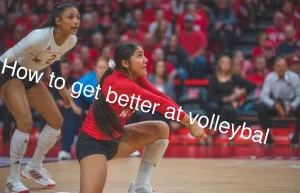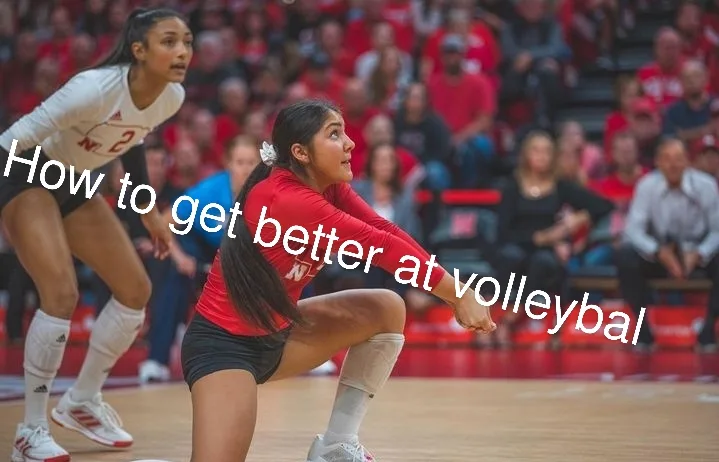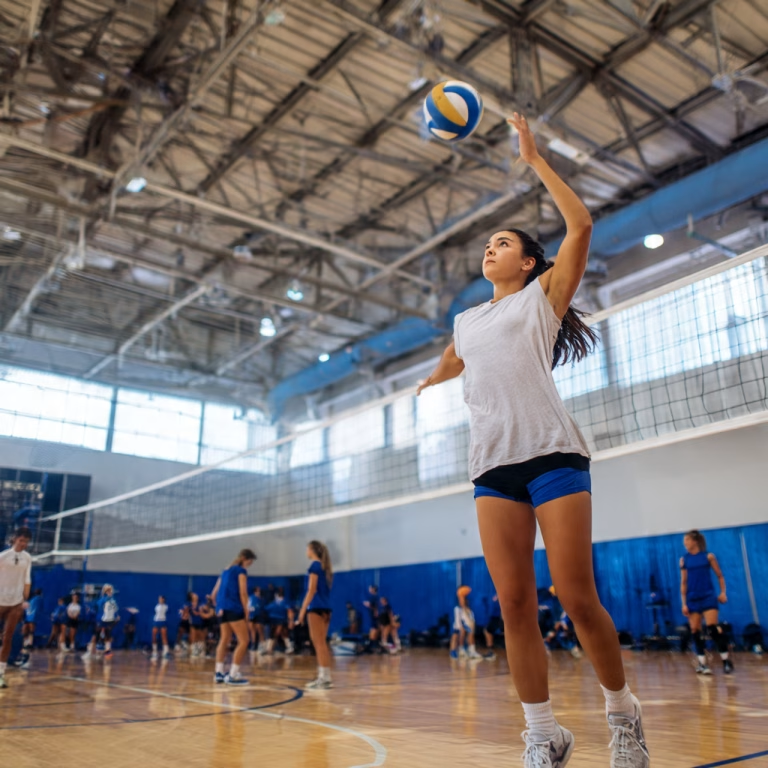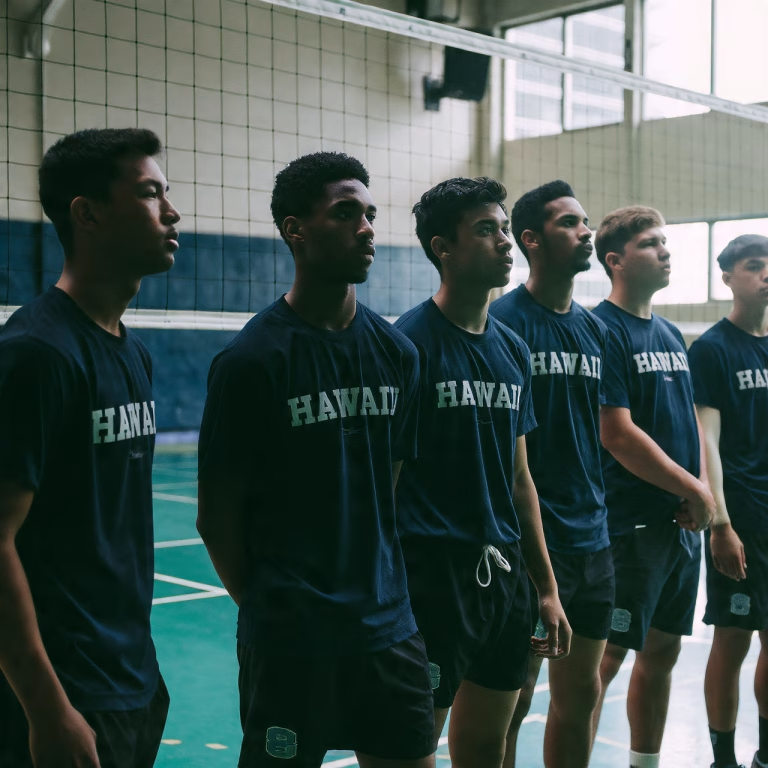Getting better at volleyball requires dedication, practice, and a willingness to learn. In this guide, we will explore how to get better at volleyball by focusing on essential skills, physical conditioning, and mental preparation.
Whether you’re a beginner or an experienced player, these tips and techniques will help you improve your game.
Small changes and improvements can have a big impact on your overall volleyball game.
By incorporating the following training tips and tricks into your gameplay, you can gain a deeper understanding of how volleyball works and learn the skills and strategies it takes to become a better player.
How to get better at volleyball

How to Get Better at Volleyball: 5 Easy Training Tips and Tricks: this training tips will help you to improve your volleyball game
Unsure where to begin with your volleyball training? Use these tips to help improve your gameplay and feel more confident on the court:
1. Work on the 6 Main Skills in Volleyball
Serving, passing, setting, blocking, digging, and hitting are the foundational skills every volleyball player should master. Improving these fundamentals can significantly benefit your overall game.
Here are some simple drills and tips for each skill to help you play to your full potential.
Serving
Whether you serve overhand or underhand, drills like target practice can help you develop your technique. Set up six targets on the opposite side of the court and aim to hit each one with your serve.
Repeat until you can consistently hit all targets.
Passing
Pipeline passing drills can improve your accuracy and control. Stand 10 feet away from a partner, pass the ball, shuffle to your right, and then return to your original position before receiving the ball back.
After 10 passes, shuffle to your left and repeat.
Setting
Drills like “have a seat” and “long distance sets” can enhance your setting skills. For “have a seat,” sit cross-legged 10 feet from a partner and set the ball back and forth.
For “long distance sets,” stand 20 feet apart and set the ball back and forth.
Blocking
Mirror blocking drills are effective for improving your timing and technique. Stand on the opposite side of the net from your partner.
Have your partner perform a series of blocking movements while you mirror their actions.
Switch roles after a few minutes.
Digging
The wall digging drill is great for practicing your defensive skills.Throw the ball against a wall and dig it when it bounces back.
Increase the difficulty by throwing the ball harder and faster.
Hitting
Hitting from the box can help you refine your hitting mechanics. Place a box in front of the net and toss balls to yourself or have a partner do it.
Focus on your form and technique as you hit each ball.
See Also:Volleyball Workouts at Home and the Gym (7-day plan)
2. Increase Your Flexibility
Flexibility and mobility are crucial for volleyball players. Stretching after every practice helps keep your muscles healthy and relaxed.
Incorporate the following types of stretches into your routine:
Static Stretching
Static stretches, such as bicep stretches, seated butterflies, and seated toe touches, can increase your flexibility and range of motion.
Hold each stretch for about 30 seconds.
Dynamic Stretching
Dynamic stretches, like lunges, leg pendulums, and arm swings, are best used before practicing to warm up your body.
Ballistic Stretching
Ballistic stretching involves bouncing and jerking motions to push beyond a dynamic stretch. Bouncing toe touches, standing lunges, and leg swings are effective for volleyball.
3. Practice Your Defense
Defense is as important as offense in volleyball. Here are some strategies to improve your defensive play:
Stay in Position and on Your Toes
Always remain ready and in position when the ball is on your opponent’s side.
This helps you avoid getting caught off guard and improves your reaction time.
Related: Volleyball Ready Position
Focus on Hand Positioning
Adjust your hand positioning based on your preferred dig strategy to be ready for the opponent’s attack.
Watch the ball and the blocker.
Good defense requires reading your opponent. Watch which blocker the attacker is targeting and plan your defense accordingly.
4. Improve Your Conditioning
Conditioning is vital for volleyball players.
Here are some types of training that can benefit your game:
Speed Training
Sprints and box jumps can improve your speed and build endurance for longer matches.
Jump Training
Exercises like box jumps and lateral skating jumps strengthen the quick-release muscles for higher and faster jumps, useful for jump serves, blocking, and spiking.
Strength Training
Incorporate exercises like deadlifts, squats, and overhead presses to strengthen the muscles used in almost every volleyball skill.
5. Perform home volleyball drills.
Even without access to a court, you can practice these drills at home to improve your game:
Single Arm Passing
Reach out in front of you with both arms shoulder-width apart and fists clenched.
Move your hands up and down to bump the ball from arm to arm.
Single Arm Setting
Stand an arm’s length away from a wall, raise a ball above your head, and practice setting it against the wall with one hand.
Repeat as the ball returns to your hand.
Passing with Yourself
With your arms out, elbows locked, wrists together, and hands folded as if to pass, hit the ball into the air using your arms.
Squat down right before the ball nears your hands and repeat to cycle the ball between the air and your arms.
Serve Standing
Step forward with your bent arm raised and elbow slightly behind your head, as you would for an overhead serve.
Throw the ball into the air with your opposite hand and perform a float serve.
See Also:
- Volleyball Drills for Freshman: A Comprehensive Guide
- Mastering Volleyball Approach Footwork: The 3-Step Technique
- Volleyball Tryouts: Evaluation Form and Tips for Selection
Set Yourself Up for Success with Quality Volleyball Gear
High-quality volleyball shoes is essential for optimal performance. Uncomfortable shoes or poorly fitting gear can detract from your game and reduce your confidence on the court.
Invest in gear that fits well and feels comfortable to play your best.
Related: 5 Best Volleyball Shoes for Setters
FAQs
How long does it take to get better at volleyball?
Improvement in volleyball varies for each individual.
With consistent practice, most players see noticeable progress in a few months.
Focus on regular training, and don’t get discouraged by setbacks.
What are the best exercises for volleyball players?
Strength training, cardiovascular fitness, and flexibility exercises are crucial.
Incorporate squats, lunges, push-ups, and stretching into your routine.
Cardio workouts like running or cycling help build endurance.
How can I improve my volleyball serve?
Practice is essential for a better service.
Focus on accuracy and control before adding power.
Try different serving techniques and aim for specific spots on the court.
What mental strategies help in volleyball?
Develop a positive mindset and use visualization techniques.
Practice mindfulness to stay focused during matches.
Establish routines, like deep breathing, to maintain concentration.
What should I do if I’m not improving?
Stay patient and consistent with your practice.
Seek feedback from coaches or more experienced players.
Consider joining a volleyball club or attending clinics to gain new insights.
Improving your volleyball skills takes time and effort, but with dedication and practice, you can achieve great results. Stay committed to your training, and remember to enjoy the game.




